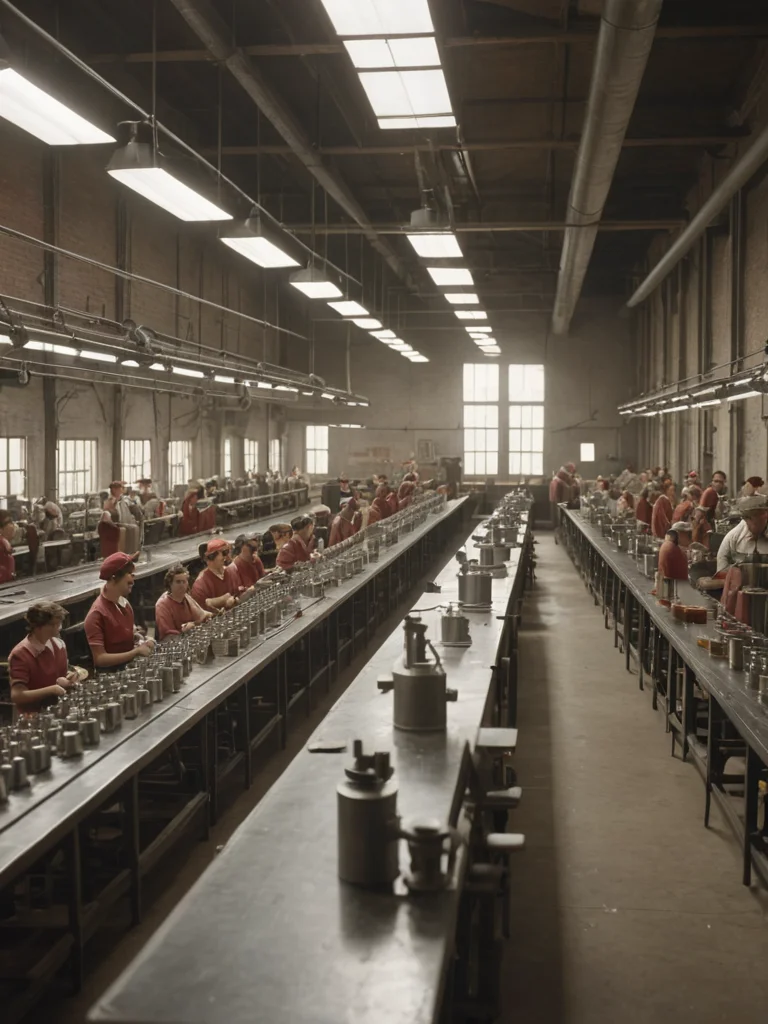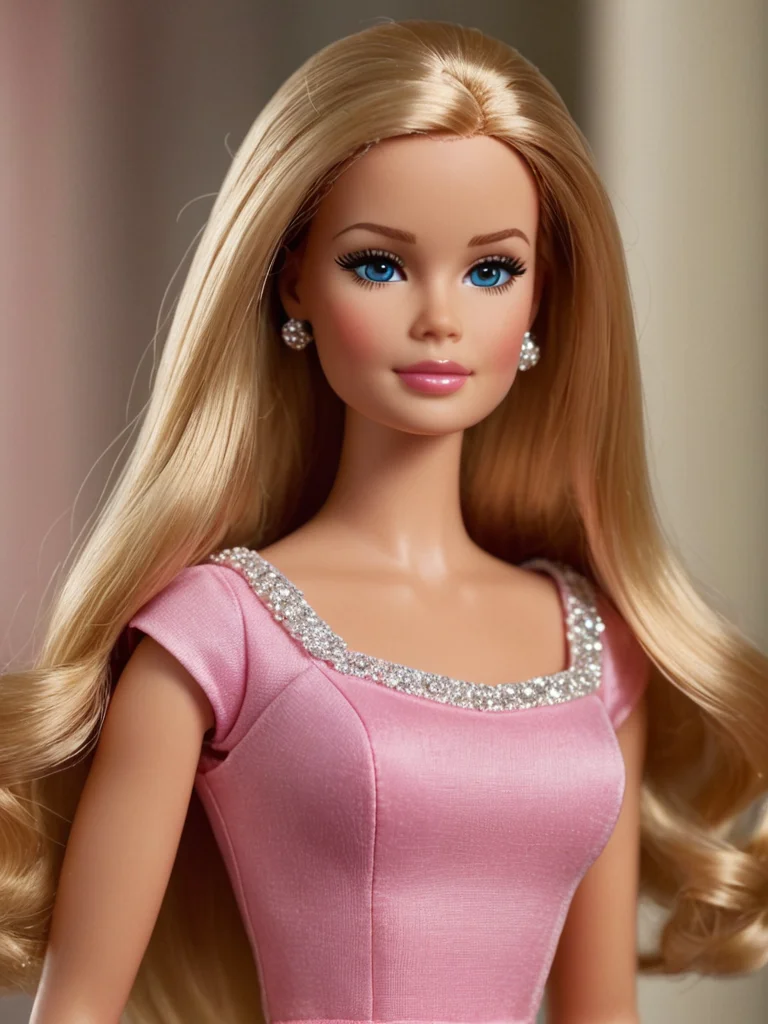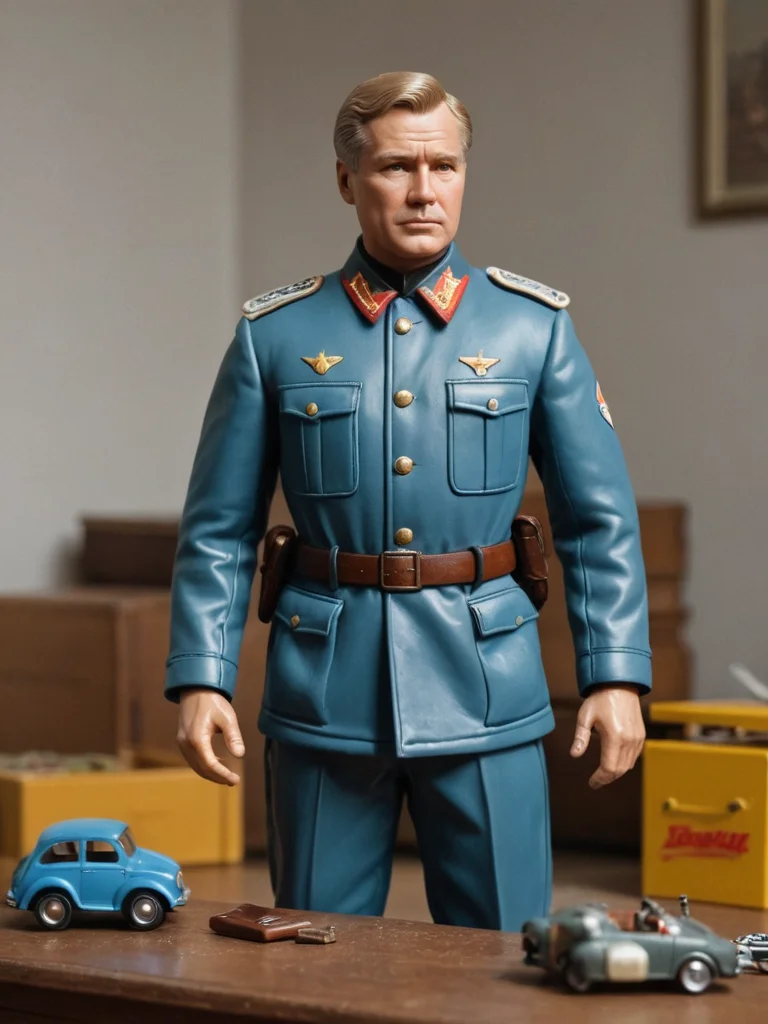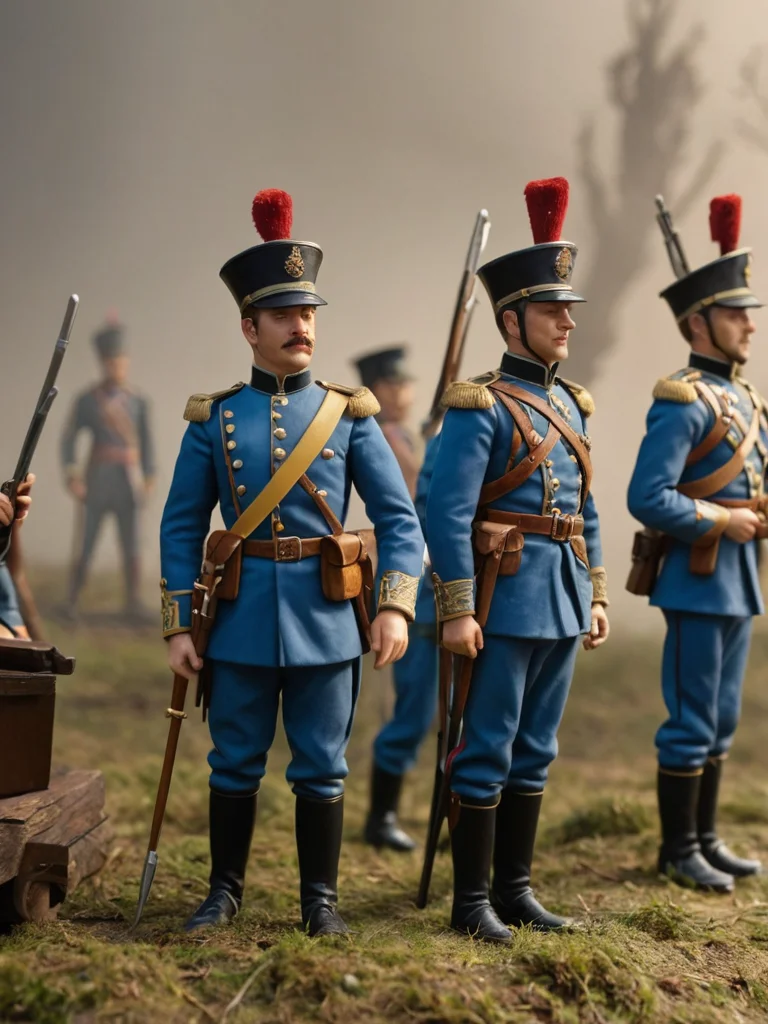Childhood is a magical time filled with games and toys. In the 20th century, the world of children’s entertainment underwent incredible changes, reflecting technological progress, cultural shifts, and new pedagogical approaches. From simple wooden horses to complex plastic construction sets and interactive dolls, toys became an integral part of growing up, shaping imagination, developing skills, and reflecting the spirit of the times. In this article, we will take a fascinating journey into the world of 20th-century childhood, trace the evolution of toys, get acquainted with the most iconic models, and learn how they influenced children’s development in different countries.
The Evolution of Toys in the 20th Century: Key Stages and Technological Breakthroughs that Defined Children’s Games
The evolution of toys in the 20th century is a captivating story that reflects the rapid progress of science and technology, as well as changes in the social and cultural spheres. Throughout the century, toys evolved from simple, often homemade, items to complex, high-tech products created using advanced materials and technologies.
At the beginning of the 20th century, toys were often made from natural materials such as wood, fabric, and metal. Wooden horses, dolls with porcelain faces, tin soldiers – these toys were symbols of traditional childhood. They developed imagination, fine motor skills, and creativity. However, their production was labor-intensive, and their availability was limited. Many children played with homemade toys created by parents or older siblings. For example, rag dolls cut from old clothes, or wooden swords made from tree branches.
World War I and the years that followed brought changes to toy manufacturing. The military industry spurred the development of new materials and technologies that were later applied to the production of children’s goods. New types of plastic, metal, and rubber emerged, allowing for the creation of more durable, long-lasting, and affordable toys.
The 1920s and 1930s became the era of mechanical toys. Wind-up cars, trains, and other mechanisms were immensely popular. They showcased the marvels of engineering and delighted children. These toys not only entertained but also introduced the basics of mechanics and technology.
World War II temporarily halted the development of the toy industry. Many factories were repurposed for military production. However, after the war, the toy industry experienced a real boom. New materials like polyethylene and polypropylene appeared, allowing for the creation of bright, lightweight, and safe toys.
The 1950s and 1960s were the era of plastic. Plastic dolls, cars, construction sets, and other toys flooded the stores. They were relatively inexpensive, colorful, and diverse. During this time, iconic toys like the Barbie doll and Lego construction sets emerged, becoming symbols of the era.
In the 1970s and 1980s, electronic toys became widespread. The first video game consoles, electronic games, and talking dolls appeared. These toys introduced children to the world of electronics and programming.
By the end of the 20th century, the toy industry had become global. Toys were produced in various countries, and their design and functionality became increasingly diverse. Computer games, interactive toys, and other high-tech products emerged, offering children new opportunities for entertainment and learning.
Thus, the evolution of toys in the 20th century reflects technological progress, social changes, and cultural trends. From simple wooden horses to complex computer games, toys have come a long way, becoming an integral part of childhood and significantly influencing children’s development.
The Most Iconic Toys of the 20th Century: History of Creation, Cultural Impact, and Interesting Facts about Popular Models (Teddy Bears, Barbie Dolls, Toy Soldiers, Board Games, Lego Construction Sets, Toy Cars)

The 20th century gave the world many iconic toys that became not just entertainment for children, but also symbols of the era, exerting a great cultural influence. Let’s look at some of them in more detail:
- Teddy Bears: The history of the teddy bear begins at the start of the 20th century and is associated with the American toy merchant Morris Michtom. According to legend, Michtom, inspired by a cartoon of President Theodore Roosevelt sparing a bear cub on a hunt, created the first teddy bear and named it “Teddy’s Bear.” The toy quickly gained popularity and became a symbol of tenderness and coziness. Teddy bears were produced in various sizes and variations and remain one of the most beloved toys in the world to this day.
- Barbie Dolls: The Barbie doll, created by Ruth Handler in 1959, revolutionized the toy world. Unlike traditional dolls that depicted babies, Barbie was an adult woman with a fashionable figure and a diverse wardrobe. She offered girls the opportunity to dream about the future and imagine themselves in different roles. Barbie became not just a toy but also a style icon and a symbol of American culture.
- Toy Soldiers: Toy soldiers are one of the oldest and most traditional toys. In the 20th century, toy soldiers were made from various materials, including tin, lead, plastic, and wood. They depicted soldiers from different eras and armies of the world. Toy soldiers were used for war games and battles, developing strategic thinking and imagination.
- Board Games: Board games such as “Monopoly,” “Scrabble,” and “Twister” became a popular way to spend time with family and friends. They developed logical thinking, communication skills, and teamwork. Board games remained relevant throughout the 20th century, despite the emergence of new forms of entertainment.
- Lego Construction Sets: Lego construction sets, created by Danish carpenter Ole Kirk Christiansen in 1949, became one of the most popular and versatile toys in the world. Lego consists of colorful plastic bricks that can be connected to create various models and structures. Lego develops creative thinking, fine motor skills, and spatial imagination.
- Toy Cars: Toy cars were and remain one of the most popular toys for boys. In the 20th century, toy cars were made from various materials, including metal, plastic, and wood. They depicted different types of transport, from passenger cars to trucks and racing cars. Toy cars developed imagination, coordination, and an interest in technology.
These and many other 20th-century toys left an indelible mark on the history of childhood, shaping imagination, developing skills, and reflecting the spirit of the times. They became not just entertainment but an important part of culture, uniting different generations.
Toys and Childhood in Different Countries: A Comparison of the Most Popular Toys and Games in the USSR, USA, and Europe

Childhood and toys are inextricably linked; however, perceptions of childhood and preferences in toys can vary significantly across different countries and cultures. Let’s examine which toys were most popular in the USSR, USA, and Europe in the 20th century, and what factors influenced these differences.
USSR: In the Soviet Union, toys reflected ideological values and educational goals. Great emphasis was placed on developing collectivism, diligence, and patriotism. Therefore, toys related to professions, technology, and military themes were popular. These included:
- Toy Soldiers and Military Equipment: Toy soldiers, tanks, airplanes, and cannons were immensely popular, especially during the Great Patriotic War and the post-war years. They instilled patriotism and readiness to defend the Motherland in children.
- Construction Sets and Technical Kits: Various construction sets, modeling kits, and technical toys developed engineering thinking and an interest in science and technology.
- Dolls Depicting Soviet Pioneers and Workers: Dolls dressed in pioneer uniforms or portraying workers and collective farmers symbolized Soviet ideals and values.
- Board Games Promoting Collectivism: Board games such as “Hockey” and “Sea Battle” fostered teamwork and the ability to work together.
It is worth noting that the USSR had a limited selection of imported toys, and most toys were produced in Soviet factories. At the same time, special attention was paid to the quality and safety of toys.
USA: In the United States, the toy industry was more developed and oriented towards consumer demand. Popular toys reflected the American dream and consumer culture. These included:
- Barbie Dolls and Other Fashion Dolls: Barbie dolls and other dolls depicting fashionable and successful young women were immensely popular, especially among girls. They symbolized the American dream of beauty, success, and wealth.
- Toy Cars and Vehicles: Toy cars, trucks, airplanes, and trains were very popular among boys. They reflected the American love for cars and travel.
- Superheroes and Comic Book Characters: Toys depicting superheroes from comic books, such as Superman, Batman, and Spider-Man, were hugely popular among children of all ages.
- Board Games Promoting Competition: Board games like “Monopoly” fostered entrepreneurial skills and a competitive spirit.
The USA had a wide selection of imported toys, and American children had the opportunity to play with toys from different countries around the world.
Europe: In Europe, as in the USA, there was a developed toy market; however, toy preferences could vary across different countries. In general, European toys were characterized by higher quality and educational value. Popular toys included:
- Wooden Toys: Wooden toys, such as blocks, construction sets, and puzzles, were popular due to their eco-friendliness and developmental properties.
- Dolls Depicting National Heroes and Fairy Tale Characters: Dolls dressed in national costumes or portraying fairy tale characters were popular in various European countries.
- Model Railways: Model railways were very popular among boys and adults. They developed engineering thinking and an interest in technology.
- Board Games Developing Logic and Strategy: Board games such as chess and checkers promoted logical thinking and strategic planning.
Europe also had a wide selection of imported toys, and European children had the opportunity to play with toys from different countries around the world.
Thus, toy preferences in different countries reflected cultural values, ideological beliefs, and economic conditions. In the USSR, toys were focused on developing collectivism, diligence, and patriotism; in the USA, on consumer culture and the American dream; and in Europe, on quality, educational value, and national traditions.
The Impact of Toys on Child Development in the 20th Century: How Pedagogical Approaches Changed and What Skills Games of Different Eras Developed. Conclusions and Forecasts

In the 20th century, toys played an important role in child development, shaping their personality, developing skills, and preparing them for adult life. Throughout the century, pedagogical approaches to using toys changed, reflecting new scientific knowledge and social trends. Let’s examine how toys influenced child development in different eras and what skills different types of games developed.
At the beginning of the 20th century, when pedagogical approaches were more traditional, toys were primarily seen as a means of entertainment and filling leisure time. However, even then, some educators and psychologists noted that toys could play an important role in child development, fostering imagination, fine motor skills, and social skills.
In the 1920s and 1930s, with the development of pedagogy and psychology, toys began to be seen as an important tool for a child’s learning and development. New types of toys emerged, aimed at developing specific skills and abilities. For example, construction sets developed engineering thinking, board games developed logical thinking, and dolls developed social skills and empathy.
In the 1950s and 1960s, with the advent of new materials and technologies, the toy industry experienced a boom. Plastic dolls, cars, and construction sets appeared, which were more accessible and diverse. During this time, educators began to pay attention to how toys could shape a child’s values and stereotypes. For instance, the Barbie doll, which became a symbol of the American dream, drew criticism for promoting unrealistic beauty standards.
In the 1970s and 1980s, with the emergence of electronic toys and video game consoles, educators became concerned that children were spending too much time in front of screens and losing interest in active play. However, research showed that electronic games could develop certain skills, such as reaction time, coordination, and logical thinking.
By the end of the 20th century, with the development of computer technologies and the internet, new opportunities for child learning and development through toys emerged. Interactive toys, educational programs, and online games offered children new ways to explore the world and develop their abilities.
The impact of toys on child development in the 20th century was immense and multifaceted. Toys developed imagination, fine motor skills, logical thinking, social skills, empathy, and other important qualities. They helped children explore the world, learn new things, and prepare for adult life. Pedagogical approaches to using toys changed throughout the century, reflecting new scientific knowledge and social trends. However, regardless of the era, toys remained an important tool for a child’s learning and development.
Conclusions and Forecasts: In the 20th century, toys underwent a long evolutionary journey, reflecting technological progress, social changes, and cultural trends. From simple wooden horses to complex computer games, toys became an integral part of childhood and had a significant impact on children’s development. In the future, with the development of new technologies such as artificial intelligence, virtual and augmented reality, toys will become even more interactive, personalized, and educational. They will offer children new opportunities for learning, development, and entertainment. However, it is important to remember that toys are just a tool, and their impact on a child’s development depends on how they are used. Parents and educators should choose toys based on the child’s age, interests, and needs, and ensure that play is balanced and contributes to the holistic development of the personality.
